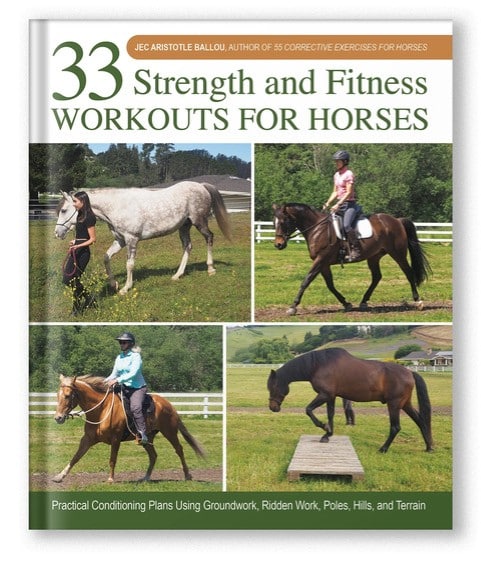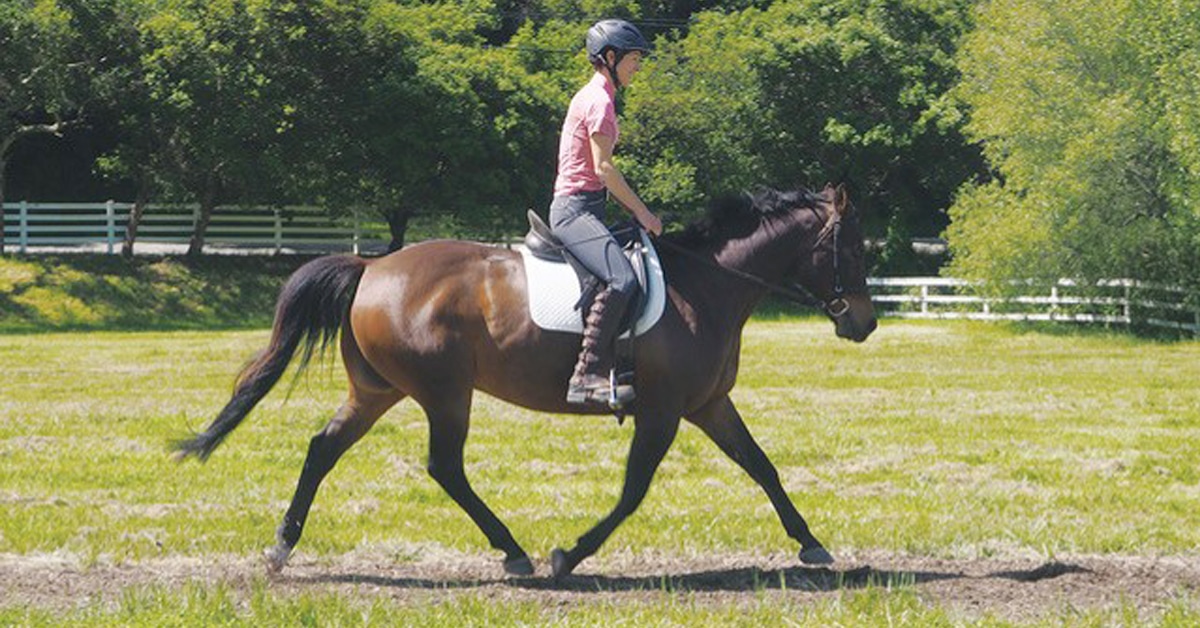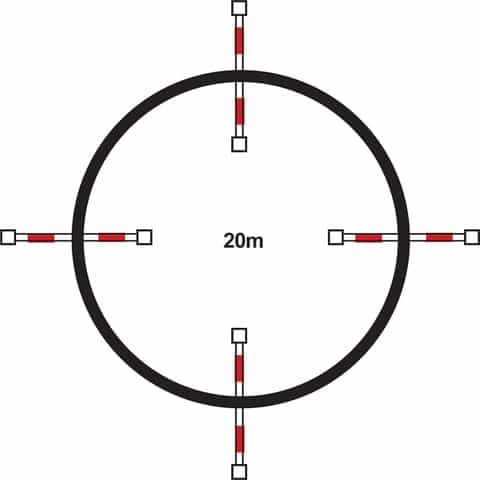Most riders possess an arsenal of useful exercises to perform with their horses. But when it comes to improving equine fitness, exercises rely not only on weekly relevance but on dosage—how intensely an exercise is applied, the duration and frequency of execution, and the weekly schedule within which workouts exist determines its impact on fitness. How long and how frequently your horse exercises, and in which combinations they are best performed, will help you maximize your horse’s athleticism.

The importance of equine fitness cannot be overstated because performance erodes without fitness. In terms of health, good behavior, and overall wellbeing, it is a critical tool in your toolbox. While it can be tempting to assume that horses make daily conditioning gains by practicing the skill sets within your chosen discipline, this fails to be the case over the long term. When performing at a similar power output, metabolic state, and duration, a horse’s physiological state reaches a point of diminishing returns. Eventually, the body becomes so efficient at performing habituated routines that fitness begins to erase. Becoming more efficient means the body has practiced movement patterns so frequently that it recruits fewer muscle fibers to operate the same muscle contractions and accomplish the same gymnastic task. Without varied stimulus, previously engaged muscles become less active. Therefore, targeted bouts of stimulus that are not tied to skills within their discipline are what can help most horses continue gaining, or maintaining, fitness.
A useful parallel here is the human runner, hiker or cyclist whose performance begins to erode unless supportive workouts are incorporated—that is, strength work, core and posture workouts, stretching routines, and cross-training. The body needs novelty and challenges to stay attuned.
Successful workouts deliver these challenges. Their entire purpose is physical and athletic improvement. I make this simple point because many riders have a hard time letting go of their sport-specific ideals to momentarily prioritize physical conditioning. For example, your dressage horse is not going to be “on the bit” during a gallop set; your arena-only horse might initially become distracted during hill workouts and trail hikes; your trail horse might trip over his own feet during groundwork routines. This is all perfectly okay. Do not get lost in these details. Remember: you are not being judged; the purpose is to deliver conditioning stimulus as opposed to perfecting a performance.

Hill hikes are excellent for strengthening the hind end. (Donna Stidolph photo)
Productive exercise can take all kinds of forms, and it is worth remembering that it is not just the work you do when practicing your discipline or having a lesson that counts. The body benefits from differing intensities, both short and long sessions, novel patterns of joint flexion, precise motor control as well as big propulsive efforts. In sum, there is a broad scope of beneficial ways to move your horse daily beyond the trappings of your normal routine.
A productive session is not necessarily measured by its vigor. Good workouts should be valuable to the horse, not just tire him out or create a lot of sweat. Workouts should begin by asking oneself, “What does this horse need?” Does he need a dose of strong hard effort like gallop intervals or hill climbs to fire up the hindquarter muscles? Does he need long interval sets to increase stamina in his working gaits? Or does he need a routine to activate the body but release tension and stiffness?
Sometimes a brisk 2-mile walk down the road followed by several purposeful groundwork exercises is just what the body needs to loosen up and engage core muscles. Other times, a session of gymnastic jumps can deliver powerful stimulus to muscles that have become overused and stiff from dressage. My point in offering these examples is to encourage you to think broadly about the variety of both small and large workouts that help a body thrive.
By asking yourself what the horse needs on a weekly and daily basis, you will avoid the pitfalls of repetitive movement, which not only undermines physical conditioning but also predisposes the horse to injury and restricted gaits. Most horses, even those in a regular training program, benefit from additional periods of movement in their day. This keeps the body’s soft tissues pliable, the muscles oxygenated, and the nerve signals primed.
Before starting the actual workouts, it is worth highlighting the protective role of fitness for a horse. Daily exercise controls the following basic bodily functions in your horse:
1. Aids gastrointestinal motility.
2. Increases clearance of secretions from lungs.
3. Improves immunity and resistance to disease; muscle contractions serve as a pump for lymphatic system.
4. Strengthens hooves and contributes to healthy growth.
5. Improves thermoregulation.
6. Determines functionality of muscles, tendons, and ligaments.
7. Relieves physical stiffness and mental stress associated with confinement in domesticated horses.
8. Delivery of circulation for blood, oxygen, muscle enzymes, and nutrients that prevent inflammation.
Sample Exercise to Build Strength – The Canter Clock
DURATION: Approximately 35 minutes
SETUP: Clockface Poles
BENEFITS: Helps to develop the horse’s gymnastic muscles.
To begin, set up the Clockface Poles pattern with the following modification: place a single pole (not two) at each quarter mark of the circle.
HOW-TO:
1. For 10 minutes — Warm up walking.
2. For 5 minutes — Warm up trotting.
3. For 2 minutes (each direction) — Canter speed changes (slow to very brisk, and repeat continuously), around the perimeter of the arena.
4. Do 10 reps of cantering Clockface Poles on your right lead.
5. For 1 minute — Rest at walk.
6. Do 10 reps of cantering Clockface Poles, left lead.
7. For 1 minute — Rest at walk.
8. Finish with 5 minutes of easy jogging and 10 minutes of walking
To reiterate, these systems are dependent on sufficient exercise and activity. In other words, we owe it to our horses to keep them fit.
***
This excerpt from 33 Strength and Fitness Workouts for Horses is reprinted with permission from Trafalgar Square Books. To order a copy, go HERE.


